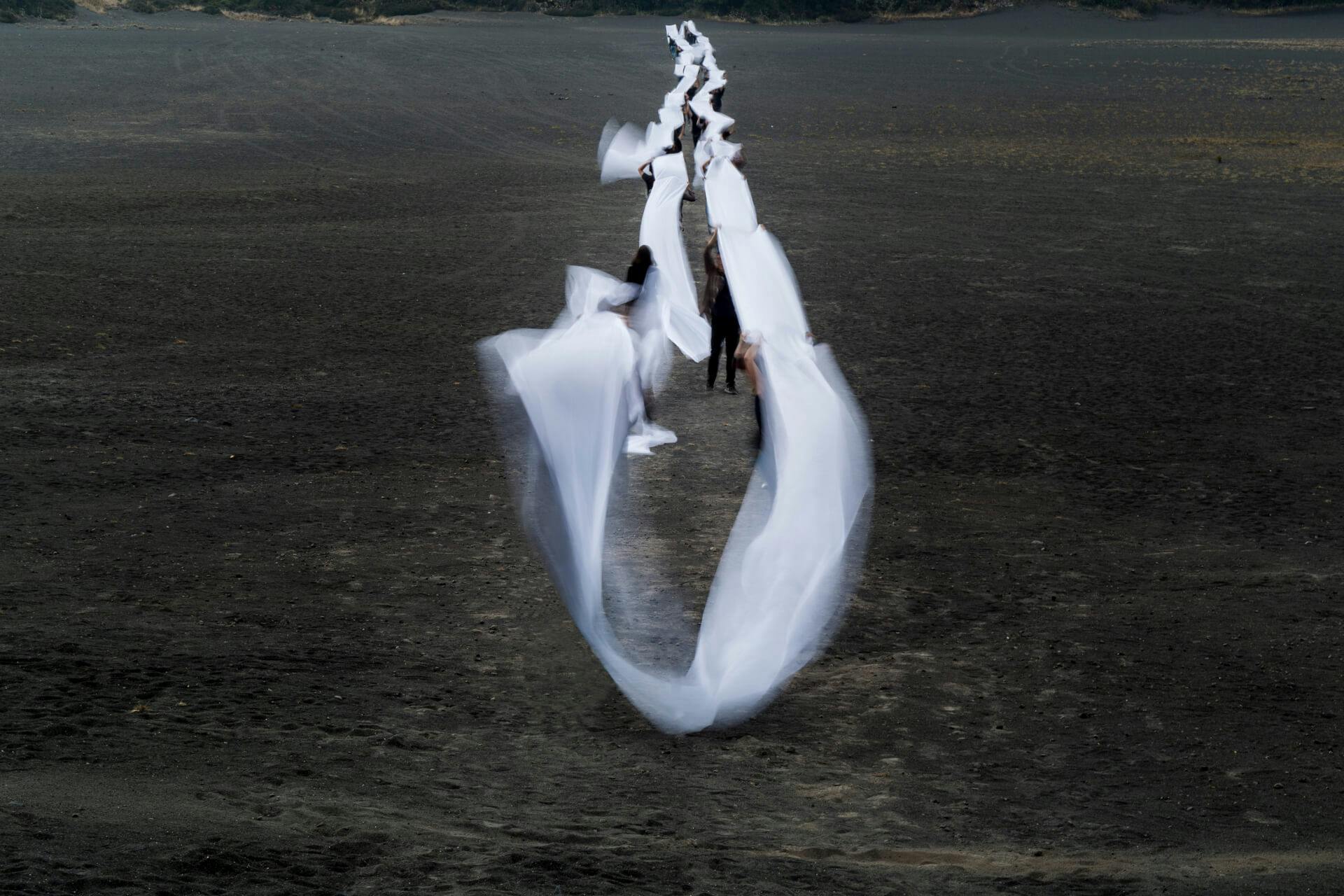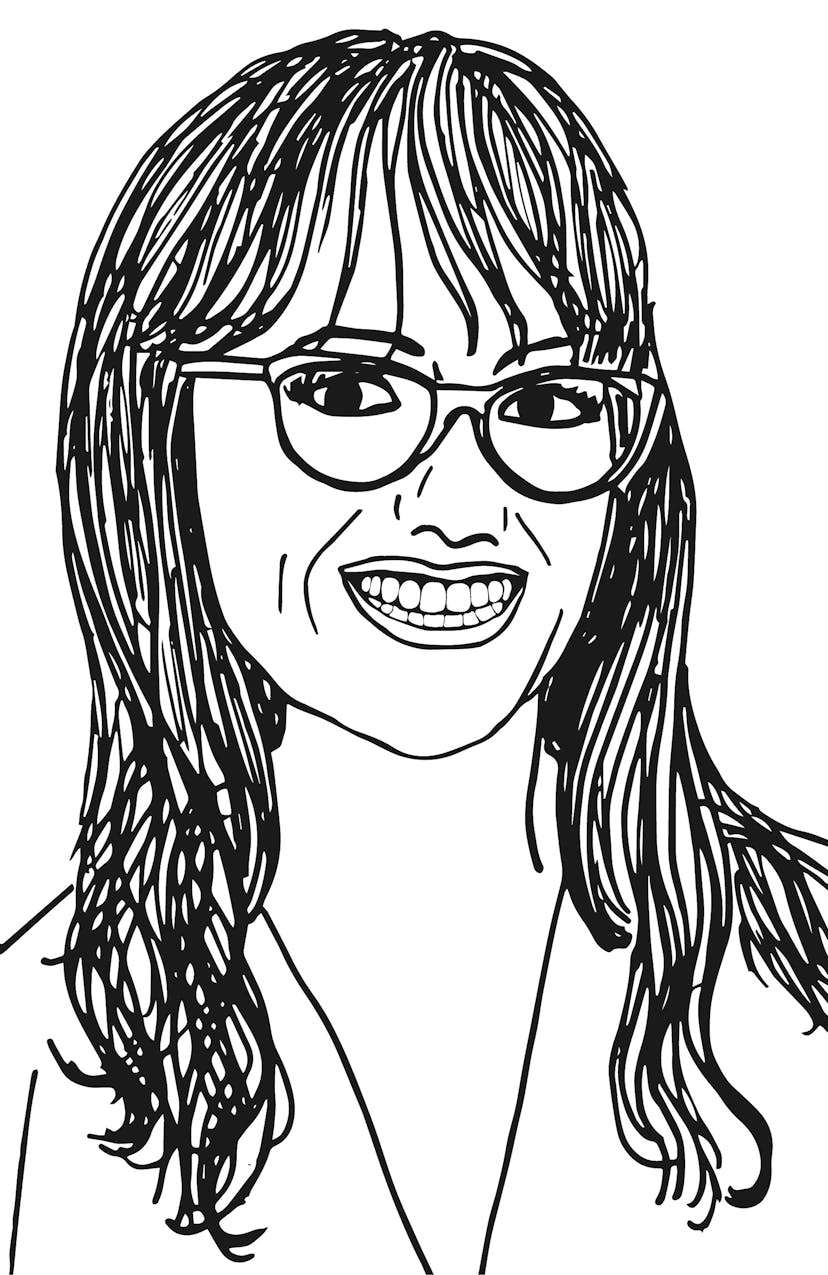Every fall, ten artists and ten writers arrive at the end of the earth. They come to the tip of Cape Cod, to a town set sixty miles out to sea, for a fellowship at Provincetown’s Fine Arts Work Center. Established in 1968, it’s an unusually long residency program, running from the start of October through the end of April. Provincetown can seem like a nonstop party in the summer, but the fellows work through the winter months, when the crowds are long gone and storefronts are shuttered and the place can feel peaceful or lonesome, depending on your mood, which may well shift with the tide. The Provincetown Art Association and Museum, set less than half a mile from the center’s campus, hosts an exhibition of the fellows’ work each year. Curated by Christine McCarthy, this year’s installment opened midway through the residency and is on view through March 3. It’s a chance to get a peek at some brand-new pieces on which the paint, proverbial or literal, may be barely dry, as well as previous works that often connect with the fellows’ current projects. It’s also a total grab bag: these aren’t artists linked by subject or theme, medium or style. What they share is the fact that they were selected from a field of nearly eight hundred applicants in a blind submission process juried by former fellows. And they are all creating new work at the same time in the same singular place.
Jeff Gibbons, an artist who works across sculpture, painting, video, writing, and music, puts natural finds he’s collected in Provincetown to magical use in Caterpillar House: The Tear Eater and the Box Turtle (2024). The sculpture’s starting point was a box turtle shell he encountered on a walk in the woods. A missing piece in the sun-bleached shell struck him as the doorway to a tiny home. Now the shell perches at the peak of a mountain of sorts, lined with a winding stairway and made from fallen branches and an ax handle Gibbons discovered in a dumpster. Peer through the window in the shell, and you’ll see a miniature room housing a wood stove, a bookshelf, a rug, a lamp, a coffee cup, and a lone inhabitant: a monarch butterfly. The room could be a setting from a storybook, but this tale takes a dark turn. Gibbons imagined a caterpillar crawling up the stairs to take shelter in the shell, a place of safety and comfort. Now the creature has transformed and grown too large for its home. We’re glimpsing the monarch at a moment of decision: if it stays, its sanctuary will become a prison. The work is whimsical until it isn’t, and the LED light that shines from the tiny window is not a warm glow but a cold blue light, like the light of a doomscrolling screen during a dark night of the soul. Some butterflies are known to drink the tears of turtles, thirsty for salt. Gibbons found a toy butterfly under a bed in a rental after the death of a dear friend. After he arrived in Provincetown, a butterfly was born from a chrysalis hanging in a new friend’s doorway, and Gibbons found his shell dweller after wandering into a shop selling taxidermied butterflies. Reality rhymes like that sometimes. Gibbons has transmuted small snatches of life—biographic material, tangible materials found by chance but collected with intention—into something potent and poignant.
Rehab El Sadek’s mother | child (2024) began as a painting, the artist’s first work on canvas in two decades, but it employs techniques from her installation and sculpture practice too. El Sadek often draws inspiration from antiquity, and this new canvas does indeed look weathered. (I am reminded that weather is a Janus word, a word that is its own opposite, meaning both “to endure” and “to erode.”) The artist has painted it with earth pigments from her native Egypt and draped it with gauze, a material that evokes both funerary rites and the fragility of human skin. It feels like a gesture of care. A kind of umbilical cord connects the canvas with a second form on the floor, made from a book found in a Provincetown thrift shop. mother | child marks the artist’s first extended separation from her son, a young adult starting to explore the world on his own. When I learned that El Sadek imagined herself not as the larger form on the wall but as the smaller form on the floor, suddenly the composition shifted—I saw the canvas taking flight. This stealthily tender work made me think of lines from Mary Oliver, who called Provincetown home for many years: “To live in this world you must be able to do three things: to love what is mortal; to hold it against your bones knowing your own life depends on it; and, when the time comes to let it go, to let it go.”
Artist, architect, and educator Miguel Braceli, known for participatory projects in public spaces, presents a previous work, Irazú (2016), as well as a nod to the project he’s working on now. Irazú takes its name from the Irazú volcano in Costa Rica, which provided a dramatic setting for the collective performance Braceli brought to life with help from seventy architecture students from the public university Tecnológico de Costa Rica. Their bodies are dwarfed by the mist-shrouded landscape, a place of otherworldly beauty that becomes a backdrop for the quieter marvel of people working together in imperfect harmony. A video and a booklet documenting the performance show participants carrying a white band of fabric. They move in a circle, first in one direction, then the other; the circle narrows, becomes a bright line against the dark earth, a shaky streak of chalk on slate, a scribble. A photograph of the performance captures arms stretching skyward as the diaphanous ribbon stretches into the distance. It doesn’t look like a photograph at all—it looks like a painting or a scene from a blurry-edged dream. Hanging near these works in the gallery, a poster seeking submissions for Braceli’s current community-based project asks, “Got a Love Story?” The artist has been gathering local love stories to make a “Map of Love” installation, the first chapter of a project engaging with the queer legacy of Provincetown, a place that he’s experienced as something out of a fairy tale. Many fairy tales feature romance, but Braceli didn’t see himself reflected in those stories as a kid growing up in Venezuela. Keenly aware of lawmakers’ efforts to censor the stories told in US classrooms today, he’s seeking to expand notions and narratives of love through a multipart project that includes conversations with gay elders, art making with young people, and a culminating performance in April in another striking open space, the Provincetown Causeway, a mile-and-a-half-long jetty at the far end of town.
During her residency, Sasha Wortzel is putting finishing touches on River of Grass, a film about the history of colonial violence and the present-day ecological crisis in the Everglades. For this exhibition, she shares two works that play with familiar icons of South Florida—a place of natural splendor and devastating overdevelopment, where tourists and retirees find respite on dredged beaches and drained wetlands. Wortzel grew up on Sanibel, an island famed for its seashells. Her 3D-printed sculpture Conch III (2022) does and does not resemble one. Gleaming white and sharp-angled, it’s emphatically artificial. In the past, Wortzel has used sculptures from this series in audio installations. When we hold shells to our ears, we imagine we hear the ocean. When I look at this shell, I imagine a shoreline where nothing can live. I’m reminded, too, that seashells are skeletons that once protected soft-bodied creatures, and yet that armor also makes those creatures vulnerable: shells sold commercially often come from mollusks collected alive and killed. (The Shell oil company is so named because it began as a seashell importer before moving on to another extractive industry.) Nearby, Wortzel’s Sitting Shiva (2021) takes symbols of leisure—a pair of beach chairs—and swaps their standard nylon webbing for skin of the Burmese python, an invasive species introduced to South Florida through the pet trade that now preys on threatened species in the Everglades. The title ties the Jewish mourning ritual to ecological loss, though grief for human losses comes to mind, too—the chairs are empty, after all, and there were plenty of golden years cut short or preempted outright in 2021.
Returning fellow Micha Patiniott offers cerebral yet sensuous oil paintings from his Vellum series, all painted in the fall of 2023. Each depicts a blank piece of paper, but each is quite different, a little drama of light and shadow. One sheet seems to have been folded into quarters and unfolded flat again, another dogeared in the upper corners; Patiniott lavishes attention on every crease, seeking something transcendent in mundane materials. Also on view is one painting from his Celestial Bodies series, titled Rapture 1 (after the relief The Human Passions by Jef Lambeaux, 1898), likewise from 2023. The writhing nudes in the work he’s referencing caused a scandal when the relief debuted more than a century ago. Patiniott’s take is far gentler than the original. Painted in a palette of cool blues and grays, these forms are entwined but not contorted. They suggest bodies, but nothing is set in stone—that meaty thigh might well be a nebula. And the softness of the style seems to reject the rigid worldview implicit in the source material, which posits death as a punishment for human passions.
Residencies are about the gift of time and space, and I’m nearly out of both for this review, though there is more to see. Zeinab Shahidi Marnani’s video installation “I will mirror the sun to you, when you’re in the dark.” The Moon said when earth hesitated to spin (2024) marries Persian music and the sound of the wind with views of the sea and sunlight and the moon, combining footage from Iran and Provincetown and transporting you out of the gallery through its blackout viewing box. Agnes Walden, an artist who interrogates allegories at work in representations of transgender life, uses a moody, almost grungy palette to portray an ambivalent superhero in Effigy (2024) and put a new spin on the fig leaves of yore in Poultice (2024). Oscar Morel lends a sense of movement and loving handmade texture to De dos a once de la noche (From two to eleven at night) (2023), his mixed-media collage of a worker mopping the floor on a late shift. And returning fellow Tinja Ruusuvuori’s Unlearning the Feet (2024) anchors the gallery space with an outsized drawing in chalk and string on cascading canvas. I’m greedy—I would have loved to see (or rather hear) something from Ruusuvuori’s current pirate radio project, which has her bringing whale songs and curious conversations with locals to the airwaves at random intervals. But then, perhaps that’s precisely the point of an exhibition like this: to provide a small taste of what’s happening in the studio and leave us eager for more.
“The FAWC Fellows at PAAM” is on view at the Provincetown Art Association and Museum January 12–March 3, 2024.
PS: While the tenth visual art fellow, LaRissa Rogers, isn’t presenting work in this show, Bostonians will be able to experience her art soon. She’s at work on a public art project for the Greenway, slated for the summer of 2024, at the site of the home of Zipporah Potter Atkins, the first Black woman known to have owned property in the city.



